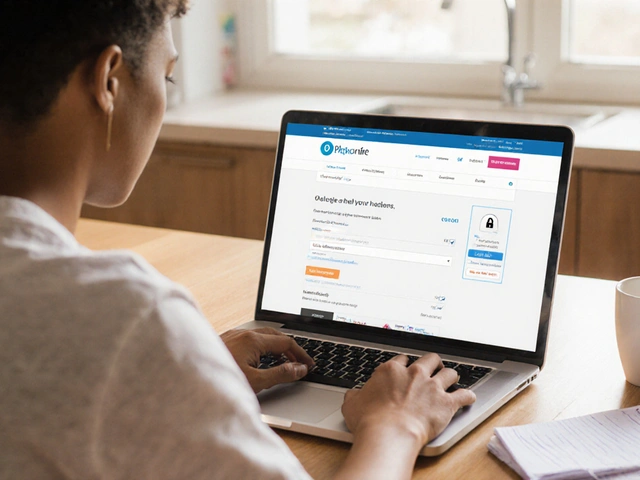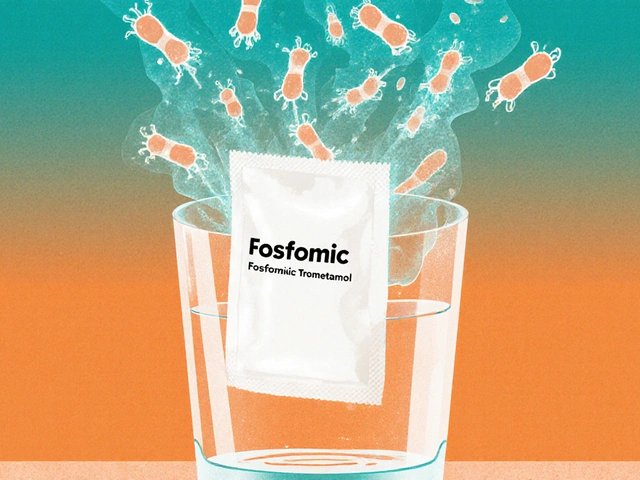If you or a loved one have been prescribed Primidone for seizures or tremor, you might wonder whether there’s a better fit out there. This guide breaks down how Primidone (sold as Mysoline) stacks up against the most common alternatives, so you can weigh efficacy, side‑effects, cost, and practical concerns before making a decision.
Key Takeaways
- Primidone is metabolized into phenobarbital, giving it a long‑acting sedative effect.
- It works well for generalized tonic‑clonic seizures and essential tremor, but can cause drowsiness and cognitive slowing.
- Valproic acid and levetiracetam are often preferred for broader seizure types because of fewer sedation issues.
- Cost varies widely: generic Primidone is cheap in Australia, while newer drugs like levetiracetam can be pricier.
- Switching drugs requires a tapered plan and monitoring for breakthrough seizures.
What Is Primidone?
Primidone is a synthetic barbiturate‑related anticonvulsant approved in 1952. It’s marketed in Australia under the brand name Mysoline. The drug works by converting in the liver to phenobarbital, which then enhances the activity of the inhibitory neurotransmitter GABA, reducing neuronal excitability.
When Is Mysoline Prescribed?
Primidone’s two main indications are:
- Generalized tonic‑clonic seizures in epilepsy.
- Essential tremor, especially when first‑line agents like propranolol are insufficient.
Because it crosses the blood‑brain barrier slowly, the therapeutic effect can take weeks to fully emerge.
Benefits and Drawbacks of Primidone
**Benefits**:
- Proven efficacy for both seizures and tremor.
- Low cost when generic is used.
- Simple once‑daily dosing for most adults.
**Drawbacks**:
- Common sedation, dizziness, and ataxia, especially during titration.
- Potential cognitive sluggishness, which can impact work or study.
- Risk of dependence if used long‑term at high doses.
Common Alternatives to Primidone
Below are the most frequently considered substitutes, each with a brief description and its typical use case.
Valproic acid (also known as Depakote) is a broad‑spectrum anticonvulsant that stabilizes neuronal membranes by increasing GABA concentrations.
Levetiracetam (Keppra) works through binding to the synaptic vesicle protein SV2A, modulating neurotransmitter release.
Carbamazepine (Tegretol) blocks voltage‑gated sodium channels, making it effective for focal seizures.
Gabapentin (Neurontin) mimics the neurotransmitter GABA but primarily targets calcium channels, useful for partial seizures and neuropathic pain.
Topiramate (Topamax) enhances GABA activity and inhibits excitatory glutamate receptors, offering broad seizure coverage.
Phenobarbital is the active metabolite of Primidone, still prescribed for certain refractory seizures.
Oxcarbazepine (Trileptal) is a keto‑analog of carbamazepine with a better side‑effect profile for some patients.
Side‑Effect Profiles at a Glance
Understanding the most common adverse effects helps you anticipate what to monitor.
- Primidone: Drowsiness, dizziness, nausea, ataxia.
- Valproic acid: Weight gain, hair loss, liver enzyme elevation, teratogenic risk.
- Levetiracetam: Irritability, mood swings, minor fatigue.
- Carbamazepine: Hyponatremia, rash (rarely Stevens‑Johnson), dizziness.
- Gabapentin: Peripheral edema, dizziness, visual changes.
- Topiramate: Cognitive slowing, paresthesia, kidney stones.
- Phenobarbital: Sedation, respiratory depression (high doses), dependence.
- Oxcarbazepine: Hyponatremia, drowsiness, rash.
Comparison Table: Primodine vs Alternatives
| Drug | Mechanism | Typical Daily Dose | Common Side Effects | Approx. Cost (AU$ per month) | FDA Approval Year |
|---|---|---|---|---|---|
| Primidone (Mysoline) | Metabolised to phenobarbital → GABA‑mediated inhibition | 250‑750mg | Drowsiness, ataxia, nausea | 10‑30 | 1952 |
| Valproic acid | Increases GABA synthesis, blocks sodium channels | 500‑1500mg | Weight gain, liver enzyme rise, teratogenicity | 30‑70 | 1978 |
| Levetiracetam | SV2A binding, modulates neurotransmitter release | 1000‑3000mg | Irritability, fatigue, dizziness | 80‑120 | 1999 |
| Carbamazepine | Blocks voltage‑gated Na⁺ channels | 200‑1200mg | Hyponatremia, rash, dizziness | 15‑40 | 1968 |
| Gabapentin | Calcium‑channel α2‑δ subunit binding | 900‑3600mg | Edema, dizziness, visual blur | 25‑55 | 1993 |
| Topiramate | Enhances GABA, blocks AMPA/kainate receptors | 50‑200mg | Cognitive slowing, paresthesia, kidney stones | 45‑80 | 1996 |
| Phenobarbital | Barbiturate → prolonged GABA‑Cl⁻ channel opening | 30‑120mg | Heavy sedation, respiratory depression, dependence | 5‑20 | 1912 |
| Oxcarbazepine | Blocks voltage‑gated Na⁺ channels (similar to carbamazepine) | 600‑2400mg | Hyponatremia, drowsiness, rash | 20‑45 | 2000 |
How to Choose the Right Medication
Picking a seizure or tremor drug isn’t a one‑size‑fits‑all decision. Consider these criteria:
- Seizure type: Generalized tonic‑clonic seizures respond well to Primidone and valproic acid, while focal seizures often need carbamazepine or levetiracetam.
- Side‑effect tolerance: If daytime drowsiness is a deal‑breaker, lean toward levetiracetam or topiramate.
- Pregnancy plans: Valproic acid carries high teratogenic risk; levetiracetam and lamotrigine are safer.
- Cost & insurance coverage: Generic Primidone and phenobarbital are budget‑friendly, whereas newer agents may need PBS approval.
- Drug interactions: Carbamazepine is a strong enzyme inducer, affecting many other meds.
Practical Tips for Switching from Primidone
Never stop Primidone abruptly. A gradual taper minimizes withdrawal seizures.
- Consult your neurologist to set a taper schedule (usually 25mg reduction every 1‑2 weeks).
- Start the new medication at a low dose while still on Primidone.
- Overlap the two drugs for 1‑2 weeks, monitoring seizure frequency.
- Track side effects in a daily log; report any worsening to your doctor.
- After the new drug reaches target dose, discontinue Primidone completely.
When to Seek Immediate Medical Help
If you notice any of the following after a change, call emergency services or go to your nearest hospital:
- Sudden increase in seizure activity.
- Severe rash or facial swelling (possible hypersensitivity).
- Difficulty breathing or severe drowsiness.
Bottom Line
Primidone remains a solid, low‑cost option for specific seizure types and essential tremor, but newer agents often provide better tolerability and broader coverage. By weighing seizure classification, side‑effect profile, cost, and life‑stage considerations, you can make an informed switch if needed.
Frequently Asked Questions
Can I take Primidone with alcohol?
Alcohol amplifies Primidone’s sedative effect, increasing the risk of dizziness and falls. It’s best to avoid or limit alcohol while on the medication.
How long does it take for Primidone to work?
Therapeutic benefits usually appear after 2‑4 weeks of consistent dosing, though seizure control may need up to 6 weeks.
Is Primidone safe during pregnancy?
Primidone is classified as Category C in Australia, meaning risk cannot be ruled out. Discuss alternatives like levetiracetam with your doctor if you’re planning a pregnancy.
What’s the difference between Primidone and phenobarbital?
Primidone is a pro‑drug that’s converted to phenobarbital in the body. Phenobarbital acts directly, giving faster onset but also a higher risk of dependence.
Why do I feel foggy after starting Primidone?
The foggy feeling is typical sedation from the drug’s GABA‑boosting action. It often eases after the dose is titrated up slowly.





Sara Werb
October 17, 2025 AT 15:26Wake up, America!! The drug syndicates are pushing cheap barbiturates like Primidone while hiding the real dangers behind layers of \"research\"!!! They want us sedated, compliant, and easier to control!!! Don't trust the pharma puppeteers, they mask dependence as \"side‑effects\" and sell us a nap in a bottle!!!
Russell Abelido
October 17, 2025 AT 17:40I hear the anxiety that comes with trying to balance seizure control and everyday life, and I think it's a profound act of courage to navigate those meds 🙏. Each person's brain chemistry writes its own story, and sometimes the narrative needs a different chapter than Primidone. Stay patient with the process, and remember that you're not alone on this journey :)
Steve Holmes
October 17, 2025 AT 19:53Totally get that you want a smooth ride, and the data shows that levetiracetam often offers a lighter side‑effect profile, which could mean fewer afternoon slumps, fewer brain fog episodes, and a more stable mood, especially if you're juggling work or school, so it might be worth a chat with your neurologist about a trial.
Tom Green
October 17, 2025 AT 22:06From a mentorship perspective, it's helpful to map out the seizure types you experience and match them with the mechanisms of action. Primidone works well for generalized tonic‑clonic seizures because of its barbiturate conversion, but focal seizures often respond better to sodium‑channel blockers like carbamazepine. Keep a symptom diary; it gives your doctor concrete evidence for a tailored plan.
Emily Rankin
October 18, 2025 AT 00:20Remember that hope is a powerful ally – even when the fog of sedation feels thick, many patients find that a gradual taper combined with a new agent like topiramate can lift that cloud and bring clarity back to their days. Embrace the possibility of a brighter tomorrow, and keep communicating openly with your care team.
Rebecca Mitchell
October 18, 2025 AT 02:33Just switch meds and watch the side effects disappear.
Roberta Makaravage
October 18, 2025 AT 04:46It is utterly irresponsible to continue a regimen that dulls cognition when safer alternatives exist! 🌟 Morally, we owe ourselves the pursuit of optimal health, not the complacency of outdated prescriptions. Choose wisely, because your brain deserves the best care possible. 🙌
genevieve gaudet
October 18, 2025 AT 07:00i think it's cool how different cultures approach seizures – some rely on herbal stuff while others go full pharm. primidone's old school vibe is kinda like that, but modern meds like levetiracetam feel more like the future. just saying, keep an open mind.
Patricia Echegaray
October 18, 2025 AT 09:13Don't let the \"big pharma cabal\" dictate your brain chemistry, comrade! They sprinkle in secret additives and whisper sweet nothings about \"efficacy\" while your mind slips into a hazy twilight. Break free, demand transparency, and consider a drug that doesn't come with a hidden agenda.
Samantha Oldrid
October 18, 2025 AT 11:26Oh great, another \"miracle\" pill that promises calm but just hands you a nap.
Malia Rivera
October 18, 2025 AT 13:40Honestly, the choice between primidone and newer agents boils down to your personal tolerance for sedation versus seizure coverage. Some folks love the broad reach of valproic acid, while others prefer the lighter footprint of levetiracetam. It's all about matching the drug's profile to your lifestyle.
lisa howard
October 18, 2025 AT 15:53When I first read about primidone, I was struck by the sheer weight of its history, a relic from a time when doctors were more akin to alchemists than scientists, and this feeling only deepened as I delved into the myriad testimonies of patients who describe the drug as both a savior and a curse. The way it morphs into phenobarbital within our bodies is a biochemical drama that could rival any Hollywood blockbuster, a transformation that grants us seizure control at the expense of a relentless fog that hangs over our thoughts like a low‑lying cloud. Some nights I picture the molecule as a tiny soldier marching into the brain, brandishing a GABA‑enhancing sword, while other nights I imagine it as a sly thief slipping into the synapse and stealing our alertness. It is impossible to deny the relief many experience when their tremors subside, the tremor that once made a simple cup of coffee feel like an impossible challenge, now reduced to a gentle quiver that barely registers. Yet, the side‑effects, oh the side‑effects, are not mere footnotes; they are bold headlines in the narrative of daily life, dictating whether we can drive to work, study for exams, or simply enjoy a conversation without drifting into a haze. The literature tells us that dosage matters, that a careful titration can mitigate some of the drowsiness, but the reality for many is a trial‑and‑error dance that leaves them exhausted and frustrated. Moreover, the cost factor cannot be ignored; in some regions primidone is a bargain, while in others the price tag rivals that of luxury goods, forcing patients to weigh financial strain against medical necessity. Switching to an alternative like levetiracetam may promise a brighter horizon, yet the transition itself carries its own set of risks, including breakthrough seizures that can feel like a sudden storm after a period of calm. Physicians often recommend a tapering schedule, a slow descent from the familiar into the unknown, and this journey is fraught with both hope and trepidation. I have spoken to people who describe the moment they finally felt the mental fog lift as if waking from a long, unending nap, and they cherish that clarity as a second chance at life. Others, however, lament that the new medication brought its own brand of irritability, leaving relationships strained and moods volatile. In the end, the decision rests on a delicate balance of seizure control, side‑effect tolerance, personal values, and the ever‑present whisper of financial reality. So, whether you stay with primidone or venture into newer terrain, remember that your experience is valid, your choices are yours, and the path you walk is uniquely yours. Embrace the complexity, seek support, and never stop advocating for the best version of your health.
Cindy Thomas
October 18, 2025 AT 18:06While many celebrate the low price of primidone, it's also worth noting that cheap doesn't always mean effective for every seizure type, and sometimes the hidden costs are the cognitive side‑effects that linger long after the medication is stopped. 📚
Kate Marr
October 18, 2025 AT 20:20We have to look beyond the headline price tag and consider how a drug fits into our daily routine, especially when the side‑effects can turn a productive day into a sluggish marathon 😴. Transparency from doctors and patients sharing real‑world experiences is the key to making informed decisions 😊.
James Falcone
October 18, 2025 AT 22:33Honestly, if the government lets us pay less for a drug that's been around forever, why would we bother with pricey new stuff unless we've got a real need? Keep it simple, keep it affordable.